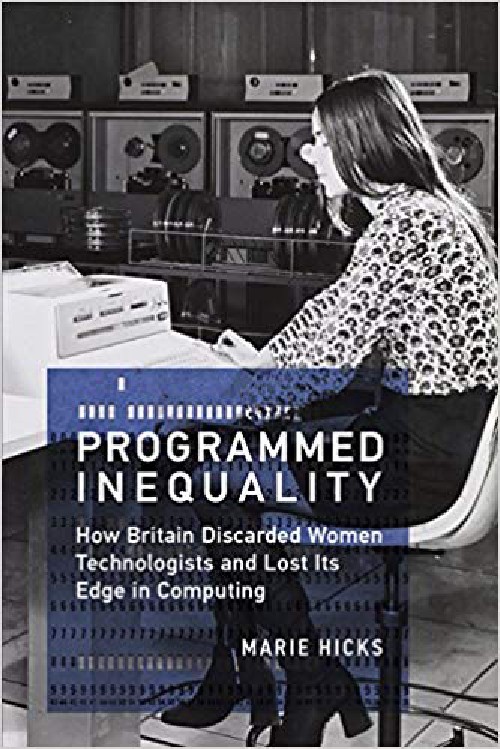
Programmed Inequality
Copyright 2017, MIT Press
Tech Industry
Near the end of Programmed Inequality, Marie Hicks’ thorough, excellent history of the post WWII British computer industry’s development, they summarize an argument infused in every page of the book:
Technological change cannot be revolutionary if it fails to change the social and political structures of a society and instead heightens inequalities and divisions that are already present.
The “yes!” I shouted in response to this was a welcome relief from most of the other verbal exclamations I’d uttered throughout the book, which were mostly along the lines of “fuck” or “goddamn” or “what the hell.”
Programmed Inequality is not a happy book, but it is a forceful argument built on extensive research. In this era where the internet and big data and cloud computing are once again ushering in an epoch of “revolutionary change,” Hicks’ book is a clear analysis of how any system of power that existed prior to a revolution will do everything possible to remake itself into a form that sustains its power.
In the post WWII era, the British state saw the data processing capabilities of computers as helpful and exciting; a way to centralize control without increasing headcount of the civil service. Hicks’ book traces the many ways reality did not match up to these goals. In the ~40 years post war Programmed Inequality traces a history where many institutions were seeking to computerize their infrastructure and were only able to do so because of a growing workforce of “invisible” women.
The initial decades of computerization were built, shaped, and debugged by thousands of women, who were codified as low-skilled and prevented (for evolving reasons) from any hopes of career advancement. Hicks thoroughly documents the labor these women performed, including telling the stories of women whose labor was effectively erased by the state for decades. These women were working in environments that were hot, loud, tedious and high-pressure, and yet their labor was constantly described in official reports as mindless, low-skilled, and low-value.
Considering that now, in 2019, we are having discussions about all of the “invisible” labor required to maintain social networks and other platforms, Hicks’ book seems incredibly relevant. The official histories of the era they write about in the book focus on the technology and the “heroic” men who supposedly carved the path towards the world we have today. Programmed Inequality is a necessary work that looks beyond these official histories to the actual primary sources, to understand what has been ignored. Hicks’ writes in their conclusion, after telling the story of one woman’s contributions:
[Andrina] Wood’s importance therefore lies not in being exceptional, but in being representative of the vast, largely hidden store of women’s labor and expertise in early computing. The fact that there were many women performing jobs like hers—operating early electronic computers, teaching others how to use them, and convincing companies to buy them—literally defined the progress of computerization. Despite the perennial emphasis in the history of computing on machines and the men who designed and later programmed them, these women computer operators filled many of the early computer industry’s most important roles, functioning as technical experts, technological emissaries, and forming the critical mass of computer labor. Before they disappeared they defined the shape of computing, and after they disappeared their absence continued to shape the field.
If we truly want to be revolutionary, our hope is not in technology or the things we build with it. We must examine the systems and institutions at work around us every day and push back against them. If we don’t, we’ll just keep perpetuating the power and injustices of our history. Programmed Inequality is an excellent reference for how this works.



